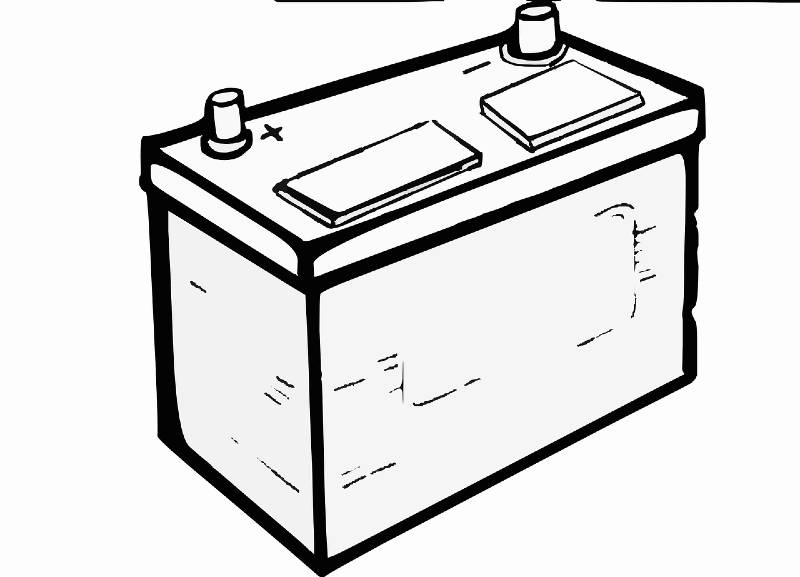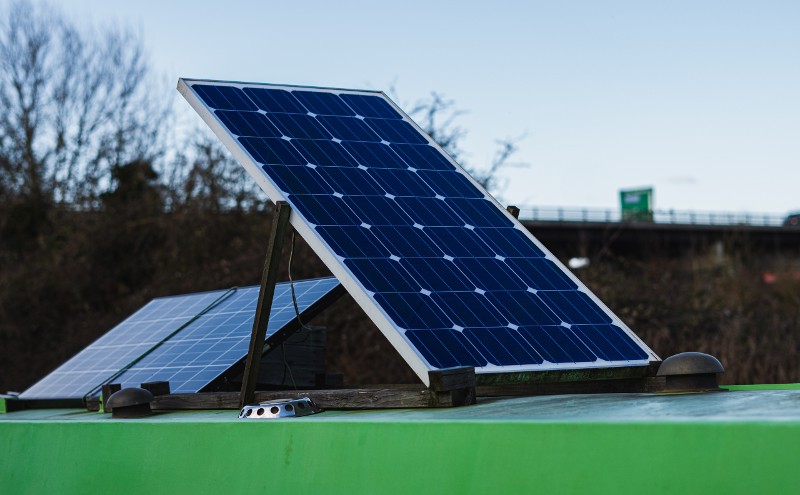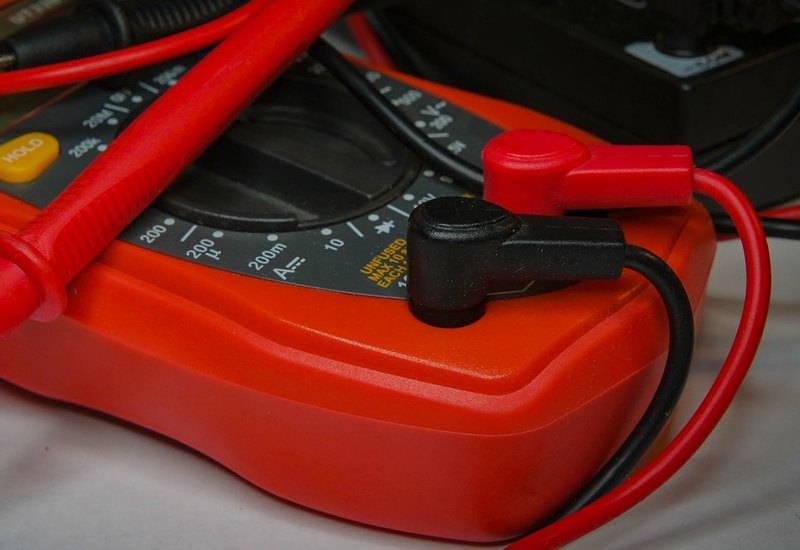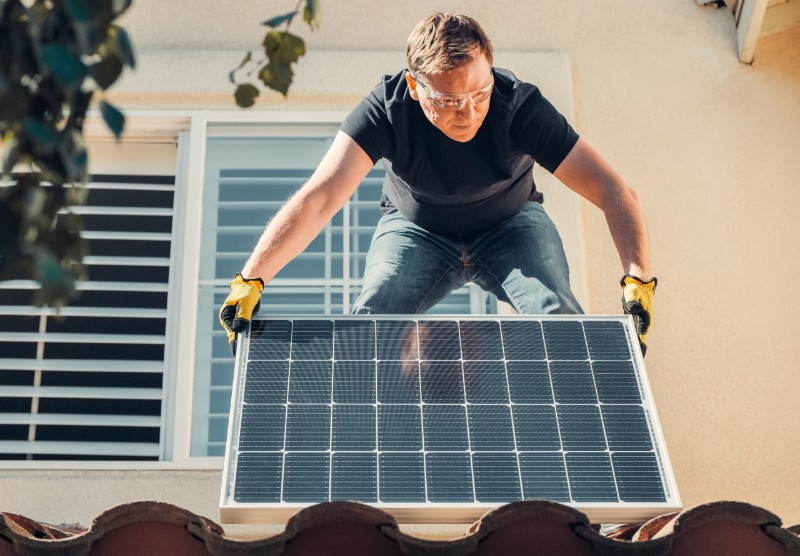There is no better way to reduce your carbon footprint and save tons of money than investing in a solar system for your home.
But how many solar panels do you need to run a house?
Well, the average house needs between 16-25 solar panels to completely offset its energy needs.
However, this number may vary depending on the size of your home, how much energy you typically use, where you live, and dozens of other factors.
But don’t worry, we’re here to help!
We have over 5 years of experience in designing solar systems and in this post, you’ll learn exactly how to calculate the number of solar panels you need to run your house step by step.
You’ll also discover how much will this solar system cost you and how much you can save in the long run.
So without further ado, let’s get started!
Key Takeaways
- You need 16-25 solar panels to run a house.
- The number of solar panels you need to run a house mainly depends on how much electricity you use, where you live, and the wattage rating of your solar panel.
- The average American household uses about 10,632kWh of electricity per year.
- The average American household needs a 6.8kW system to run the house off-grid.
- You need approximately 400ft² of roof space to install a solar panel.
- Residential solar systems cost around $2.15 per watt or $14,620 after tax credit.
- The average solar system will save you approximately $29,502 over its lifetime.
What Affects The Number of Solar Panels to Run Your House?
Every home is different, some homes will need 10 solar panels to offset their energy needs, while others may need 20 or 30 panels.
There are several factors that will impact how many solar panels you need to run your home but the most important ones are:
- Your electricity usage: The more energy you use, the more solar panels you will need to power your home.
- Where you live: Solar panels work by converting sunlight into electricity and the more sunlight you get, the more energy you can produce. So, if you live in an area with lots of sun, you might not need as many solar panels as someone who lives in a less sunny area.
- The panel wattage rating: Solar panels are available in many different wattages. You can build a 6,000W solar system with 15 400W, 20 300W panels, or 60 100W panels.
There are many other factors that can influence how many solar panels you need, including the size, orientation, and angle of your rooftop, the type of inverter you use, and more.
But, by considering the factors above, you can get a pretty good idea of how many solar panels to power your home.
How to Calculate How Many Solar Panels You Need?
Calculating how many solar panels is actually much easier than you think.
All you need to do is divide your total electricity usage (daily, monthly, or yearly) by the number of peak sun hours your area gets to find the theoretical solar system size.
Next, you need to adjust for real-life factors to account for power losses.
Finally, divide your real solar system size by the wattage rating of your panels, and voila!
You now know how many solar panels to run your house.
1. Determine Your Total Household Electricity Usage
The first step in designing any solar system is to determine how much electricity you need this system to produce.
The average household uses approximately 886kWh of electricity per month or 30kWh per day.
Of course, your usage may be higher or lower depending on how many people are living in the home, what kinds of appliances you have, what season it is, and more.
So the best way to determine your total energy usage is to check your electricity bill.
The most recent one will give you a good idea of how much electricity you use but if you want a more accurate estimation, I’d recommend tracking your energy usage for a full year.
This is because electricity usage fluctuates a lot throughout the year.
For example, you’ll use more electricity in the summer when it’s hot outside and your air conditioner is running constantly.
So for our example, let’s just say you use 10,632kWh per year.
2. Calculate Your Peak Sun Hours (PSH)
The solar panel is rated in watts, which is an indication of how efficient these panels are at converting sunlight into electricity.
In other words, it’s an indicator of how much electricity they can produce when they are exposed to sunlight.
But not any sunlight!
The tests are conducted in the laboratory under 1,000W/m² sunlight, which is the equivalent of direct sunlight at noon on a clear day in July.
So a 100W photovoltaic panel simply means that this panel will produce 100Wh of electricity for every hour of 1,000W/m² sunlight it receives.
But sunlight isn’t constant throughout the day, month, or year.
It varies from place to place and from time to time.
At dawn, the sunlight intensity might be 300W/m², while at noon, it might be 1200W/m².
So in order to get a more accurate estimation of how much electricity your solar panel can produce, we use something called peak sun hours.
Peak sun hours is a term that refers to the number of hours in a day when the solar irradiance in your area averages 1,000W/m².
On average, you should expect 3-6 peak sun hours per day or 1640 sun hours per year.
But for more accurate estimation, use this zip calculator to determine the number of peak sun hours you get per day, then multiply that number by 365.25 to get your yearly PSH.
So for our example, let’s say that you live in California and you receive 5.31 peak sun hours per day or 1940 peak sun hours per year.
3. Calculate Your Theoretical Solar System Size
Now that you know your total energy usage and peak sun hours you receive, it’s time to calculate the size of your solar system.
Theoretical Solar System Size (kW) = Total Electricity Usage (kWh) / Peak Sun Hours (h)
Since our electricity usage is 10,632kWh per year and we live in California where we receive 1940 peak sun hours per year, we need a 5.48kW solar system to run our house off grid.
Important Note: Both electricity usage and the number of peak sun hours you receive must be calculated using the same time period.
If you want to do your calculation based on your monthly energy usage (886kWh), then you must divide that number by the number of peak sun hours you receive per month (161.6) and you’ll still get a system size of 5.48kW.
4. Factor in System Losses
If we live in a perfect world, a 5.48kW solar system would produce the exact amount of electricity that we need to run our house off grid.
But unfortunately, we don’t live in a perfect world.
As in the case of any electrical system, there are certain losses that occur during the production and distribution of electricity.
For solar panel, this is many factors that cause these system losses, such as cabling, dirt and debris accumulation on the panels, heat, array mismatch, inverter efficiency, and many more.
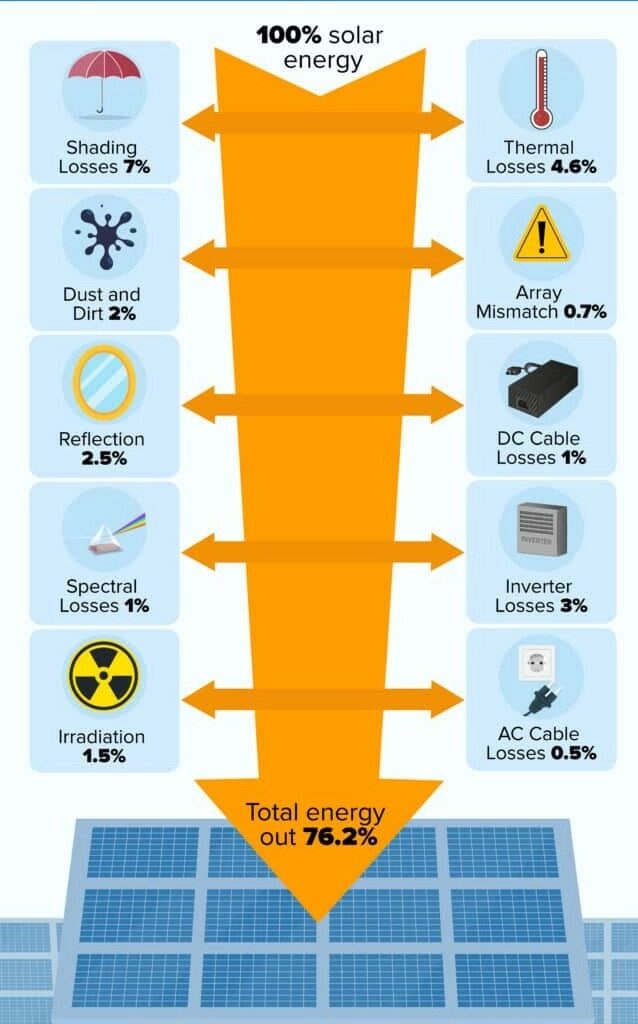
These losses can account for 23.8% of the total electrical output of a solar system, which is A LOT!
So, if you need a system to generate 10,632kWh per year, you must account for these losses.
Real Solar System Size (kW) = Theoretical Solar System Size (kW) x (1 + System Losses)
So for our example, our theoretical solar system size is 5.48kW and our losses are 23.8% (0.238)
Real Solar System Size = 5.48kW x (1 + 0.238)= 6.78kW or 6,780W.
So that’s the size of our solar system that we need to run a house off grid.
5. Calculate How Many Solar Panels You Need
We are finally at the final step in calculating how many solar panels we need to run a house off grid.
As you know, solar panels are available in many different wattages, but the most common residential solar panel wattage is 300W.
So we will use this value to calculate how many solar panels we need for our system.
Number of Solar Panels (n) = Solar System Size (W) / Solar Panel’s Wattage Rating (W)
For our example, our real solar system size is 6.78kW and we are using 300W solar panels
So: n = 6,780W / 300W = 22.6 solar panels, or about 23 solar panels.
So in order to run a house that uses 10,632kWh of electricity per year, receives an average of 5.31 peak sun hours per day, and suffers from 23.8% system losses, you need 23 300W solar panels.
How Much Roof Space Do You Need for Solar Panels?
While the efficiency and the wattage rating of solar panels might vary, the sizes typically don’t.
Most solar panels have a standard size of 65″ x 39″, which is approximately 17.55 ft².
So the amount of roof space you need for solar panels can be calculated using this formula:
Requied Roof Space (ft²) = Number of Solar Panels (n) x 17.55 (ft²)
So for 23 solar panels, you need roughly 400 ft² of roof space.
Note: In reality, you’ll need more roof space than that because of rooftop obstacles and shading, so you’ll need a bit more space than calculated.
Below is a table of how much roof space you need for different solar system sizes:
These calculations assume you’re using 300W solar panels.
What If I Don’t Have Enough Roof Space?
If you don’t have enough roof space to install a large solar system, there are other options that you can consider.
First of all, you can always opt for high-efficiency solar panels to squeeze more energy out of every square footage.
So instead of using 300W solar panels, you can use 400W solar panels.
This brings down the number of panels you need for a 6.8kW solar system from 23 to only 17 solar panels.
The second option is to install your solar system or at least a part of it on your pergola.
In fact, solar pergola systems are becoming quite popular these days as they provide an aesthetically pleasing way to generate solar energy.
Finally, you can opt for a ground-mounted solar system if you have a large amount of open ground space to install it.
This isn’t the most efficient option, nor the most economical, but it can work if you have no other choice.
How Much Will A Solar Panel System Cost Me?
Right now, residential solar systems cost about $2.15 per watt (after tax credit), so for a 6.8kW system, you should expect to pay roughly $14,620.
Of course, this amount will vary depending on many factors, such as:
- The size and efficiency of your solar panels (the more efficient, the pricier)
- The type of inverter you use (the better the inverter, the less electricity you lose during the conversion, but also the pricier)
- How much support equipment and other components are necessary (the harder the installation, the more the company will charge you)
- Whether you need additional equipment (such as a battery bank) to go off-grid
- Electricity rates in your area (states with high electricity rates, such as Hawaii, tend to have higher solar system costs)
- Solar competition in your area ( the more competition, the more pricing pressure there is on installers, and thus lower prices)
But in general, $2.15 per watt is a good baseline estimate of how much a solar system costs.
So if you’re thinking about going solar, it’s important to do your research and get multiple quotes from different installers in order to get the best deal possible.
How Much Will Solar Panels Save Me?
Once your solar system is installed and running, it can save you a significant amount of money on your electricity bills over the course of its lifetime (25 years).
Here is how to calculate your solar savings:
Solar Lifetime Savings = [Annual Electricity Production x Electricity Rate x 25] – Solar System Initial Cost
Assuming that your system produces 10,632kWh of electricity per year, you pay $0.166 per kWh.
Assuming you paid $14,620 for your system, you’ll end up with about $29,502 in solar lifetime savings.
It’s important to mention that we didn’t factor in solar degradation.
Solar panels suffer from something called degradation, which means that they lose their efficiency over time.
Most high-quality solar panels have a degradation rate of about 0.5%.
This means that if your solar system is producing 10,000kWh of energy in year one, it will produce 9,950kWh of energy in year two, 9,990.25kWh in year three, and so on.
But considering the rising costs of electricity, and the fact that solar panels last for 25 years or more, you’ll still get significant solar savings even with the degradation factored in.
FAQs
How Many Solar Panels Does It Take to Power A Typical Household?
It takes about 17-25 solar panels to power a typical household.
Can I Run My House Using Only Solar Energy?
It’s 100% possible to run your entire house using solar energy.
A solar installer can design a solar system to power your entire house, from your lights and appliances to your heating, ventilation, and air conditioning (HVAC) systems.
How Many Solar Panels to Power A House in the UK?
Assuming you’ll use 400-watt solar modules, you need 13 solar panels to power a house in the UK.
Can Solar Panels Power A House During A Power Outage?
If you have an off grid solar system (have your own battery), then yes, your solar panels will power your house during a power outage.
However, if your solar system is connected to the grid, the grid will shut down your solar system to protect grid operators and technicians from injury or death.
Last Words
Whether you want to run your house entirely on solar energy or simply reduce your electricity bills, there are many great options available to suit your needs and budget.
So be sure to work with an experienced solar installer who can help you navigate the process and find the right system for your home.

